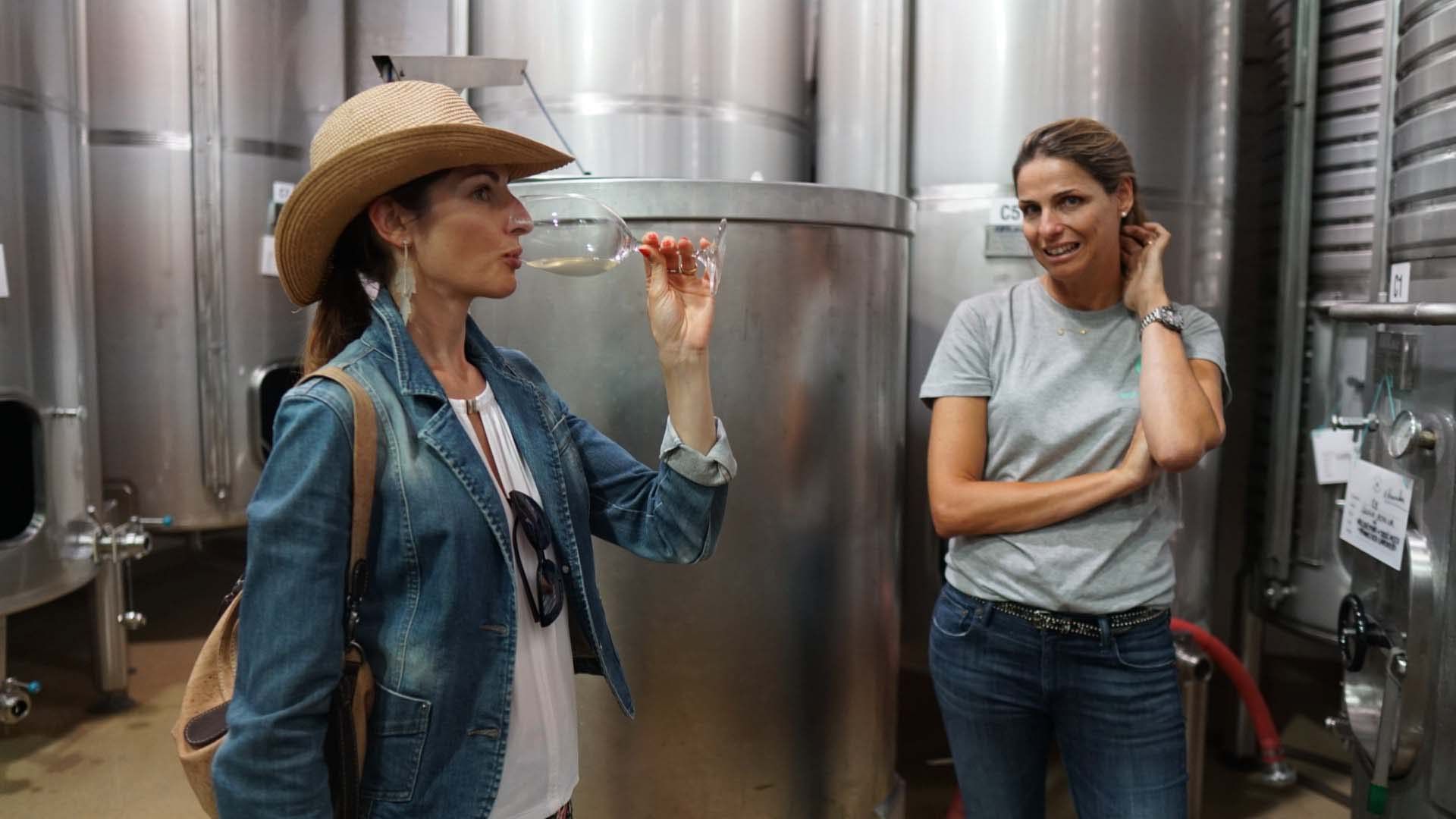
Not just Port. The new wave of Portuguese viticulture
Portugal wines are on the way to become a spectacular example of how focusing on the local, indigenous varieties is always the best idea for a wine maker to express the true sense of place, to communicate his land.
If your idea of quality Portuguese wines is sticked to Port and fortified wines, this article may be a good way to change your mind. During my journey from Douro Superior to the heart of Douro valley, I focused on still dry wines to better understand how this unique territory can be translated in the glass.
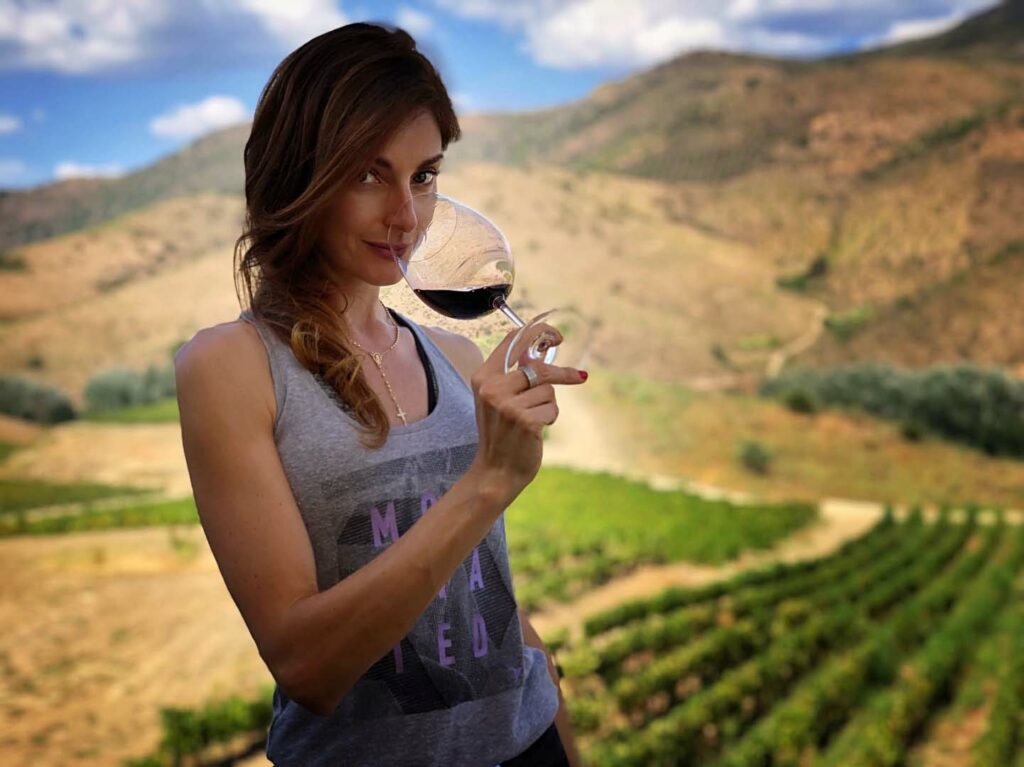
Thanks to Uncovr travel I had the chance to tailor and personalise my tour and be able to include wineries, historic villages, food experiences, art, local culture, to really understand and embrace this land. I spent 4 days, which are not enough, but it’s a good starting point.
I will surely plan other trips soon, because, I have to tell you: I was impressed.
The overall quality of the wines I tastes was fairly high and the good news is that the best wines I tasted were the one produced by young wine makers. This is a sign that the new generation of wine producers is promising and is truly trying its best to increase Portuguese wines reputation and quality, choosing indigenous varieties and respect of the grapes over marketing and massive production rules.
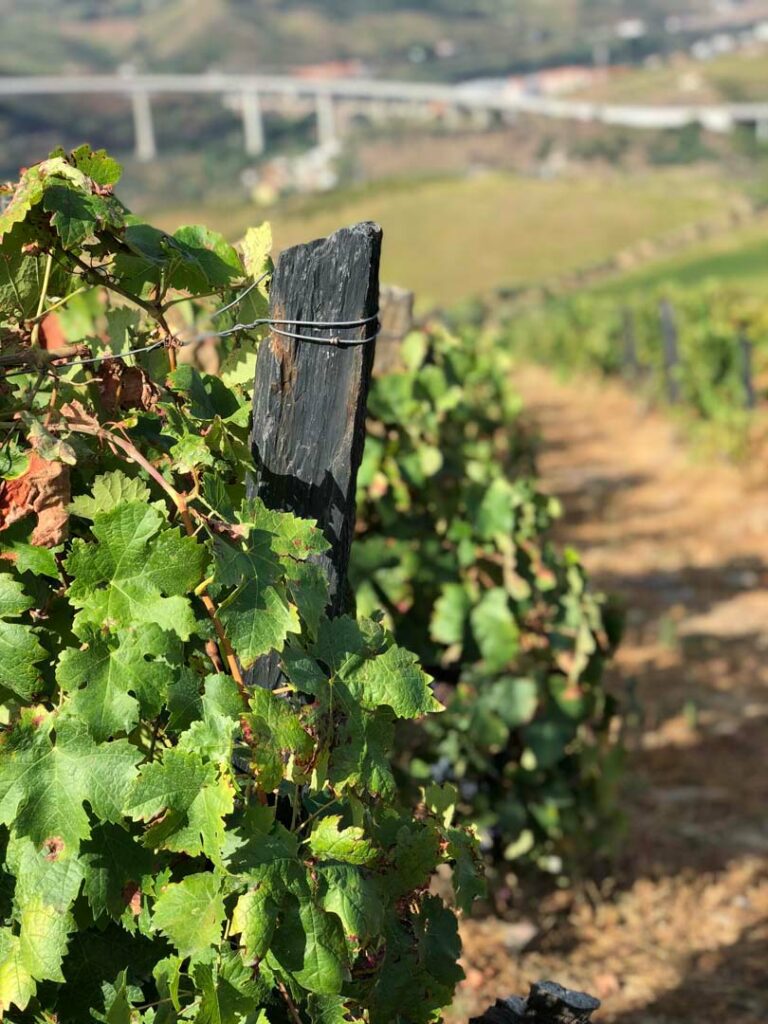
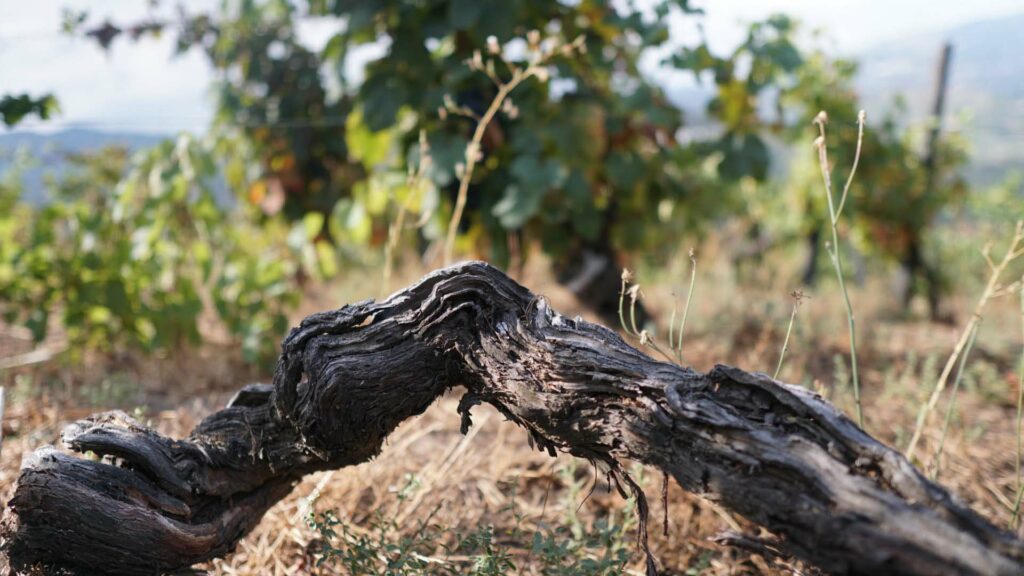
I leave you to the informative part of this reportage with information about Portuguese viticulture, about the wineries I visited, the wines I tasted and the wine regions.
I link below also the two videos on my Youtube channel about my Portugal road trip and all the places I visited (including hotels, resorts and wineries).
History of Portuguese viticulture
Dating as far back as 4000 years ago, the ancient Phoenicians laid the foundations of Portuguese wine when they first settled in Portugal and planted vines in the areas they colonized. Furthermore, the ancient Greeks and Romans advanced the Iberian Peninsula’s viticulture and influenced much of Portugal’s desire to continue to develop its craft and skill of winemaking. These native vines have played a vital role in Portugal’s viticultural history and have encouraged the world to recognize the diverse wines of this greatly under appreciated wine region.
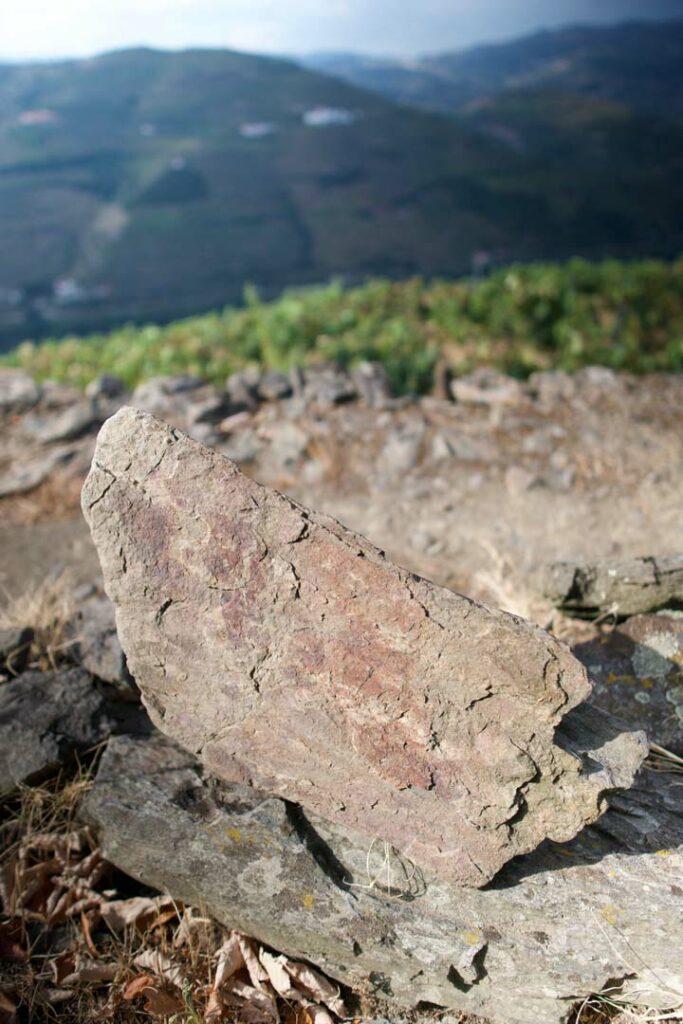
Wine regions of Portugal
Portugal, which only became recognized in more recent years for its wine production, is known for the following three core wine regions: Alentejo, Dão, and Douro.
The Alentejo region, once a key producer of the world’s wine cork supply, has come to be known as a significant winemaking area in southern Portugal. Alentejo’s hot, dry climate has been advantageous in encouraging the region’s modernization of its irrigation and further development of its regional vineyards; thus, creating an environment in which still, red wines and Tempranillo grapes are able to thrive.
The Dão region, noted for its high-altitude vineyards, is a quite mountainous region with many vineyards growing sporadically around different types of terrain. Blended wines are often most attributed to this region, and the red blends of the area are made mostly from Touriga Nacional and Tinta Roriz (a clone of the Spanish Tempranillo grape) grapes to achieve a more full-bodied finish.
Douro Valley
The Douro Valley wine region of Portugal, arguably the best known wine region in Portugal, is centered on the Douro River and surrounded by three hot, dry subzones. At the Portugal-Spain border lies the Douro Superior zone, which is the largest of the subzones and produces predominantly robust red wines. As you move further west along the Douro River, there lies the Cima Corgo zone, which is renowned for its famous Port vineyards. Finally, the third subzone is Baixo Corgo, which is the smallest of the subzones, and this zone receives the most rainfall as it is closer to the Atlantic Ocean.
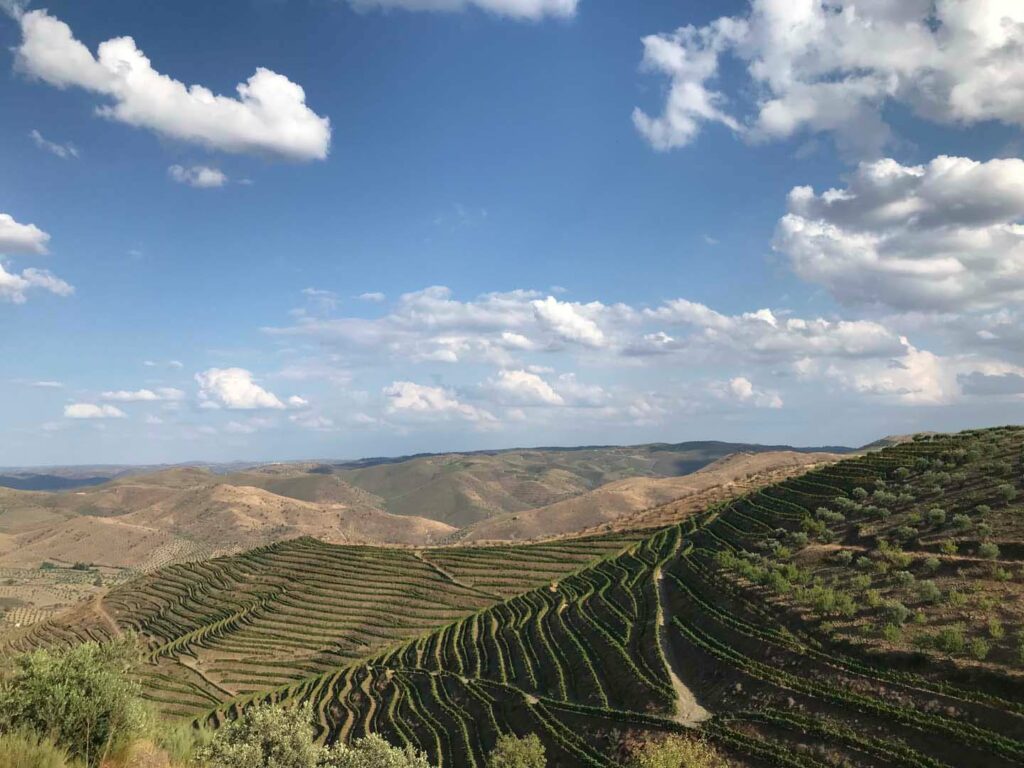
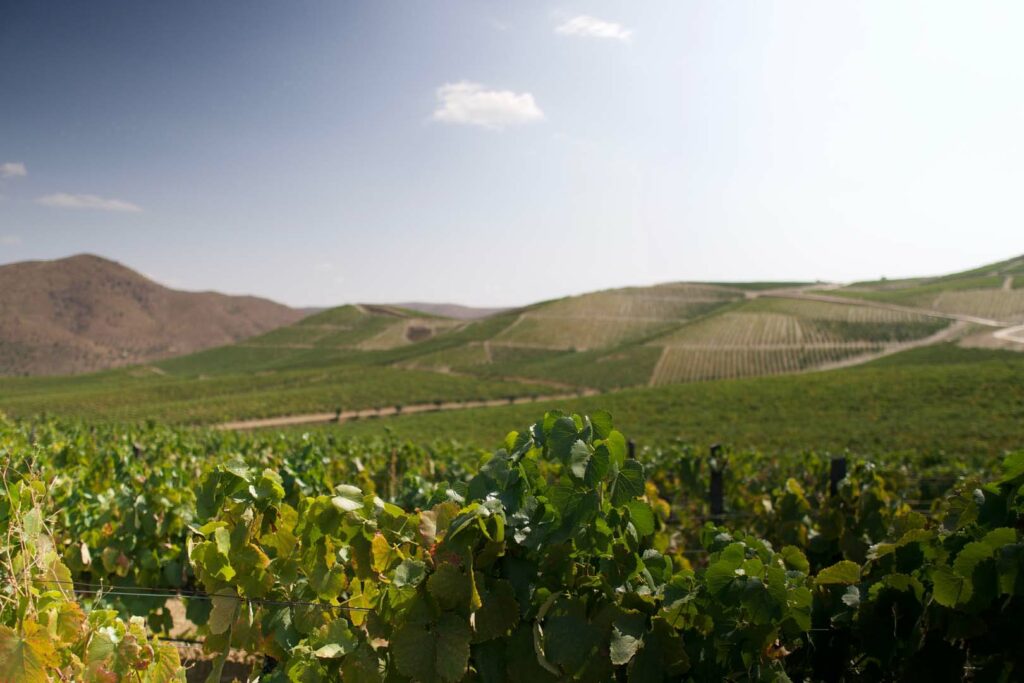
The Douro is known for having exceptionally distinctive grape varieties, due largely in part to its hot, dry climate and vicinity to the Douro River. The red grapes that are ubiquitous in the Douro include the following: Touriga Franca, Touriga Nacional and Tinta Roriz (Tempranillo). Though the Douro is known for its production of Port wines, production of table wines and fortified wines is about the same. It is evident that red wines are more commonly produced in the Douro region, but the white wines of this region are also noteworthy even if they are not considered as elegant. The white grape varieties used include Viosinho, Malvasia Fina, Gouveio, Rabigato, Côdega, Donzelinho Branco, Esgana Cão and Folgazão.
The UNESCO World Heritage vineyards that comprise the viticultural area of the Douro Valley include the steep slopes that stretch and wrap around the Douro River. This overall mountainous terrain provides a somewhat uniform quality to all of the vineyards in the region, but the similarities in terroir stop there. With vineyards that span across the steep slopes, the diversity in soil types and altitudes seem to make all the difference in terroir. The Douro Superior zone, which lies close to the innermost border of Portugal, is covered with terraced vineyards. The Cima Corgo zone, the area where most high-end Vintage Port comes from, has vineyards with soil composed predominantly of schist and granite. The Baixo Corgo is closest to the river; therefore, creating a climate that ensures the grapes mature with the right flavor profile to be best suited for table wines.
Overall, the hot, dry climate of the Douro Valley has had an immense impact on the vineyards of this wine region, and it has proven to be a challenge to the winemakers because the excessive heat can sometimes prove detrimental for the growth of the grapes.
With the numerous types of indigenous grapes in the Douro Valley, the possibilities of wine combinations are endless. Additionally, it is necessary to underscore the fact, as alluded to earlier, that Portugal is so much more than just a wine region that produces delectable Port wines.
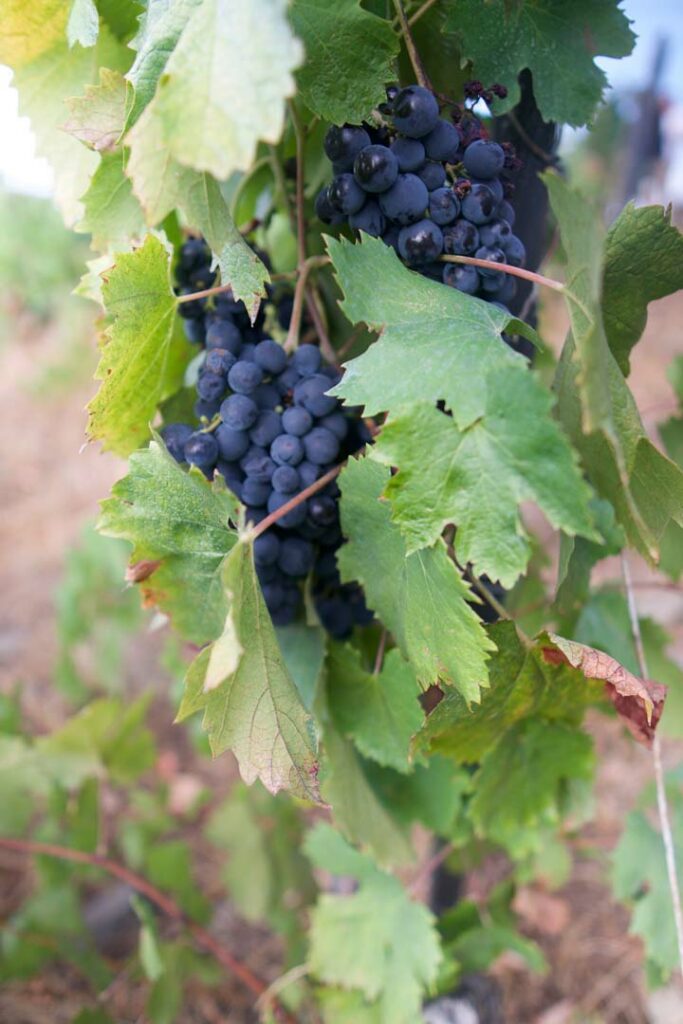
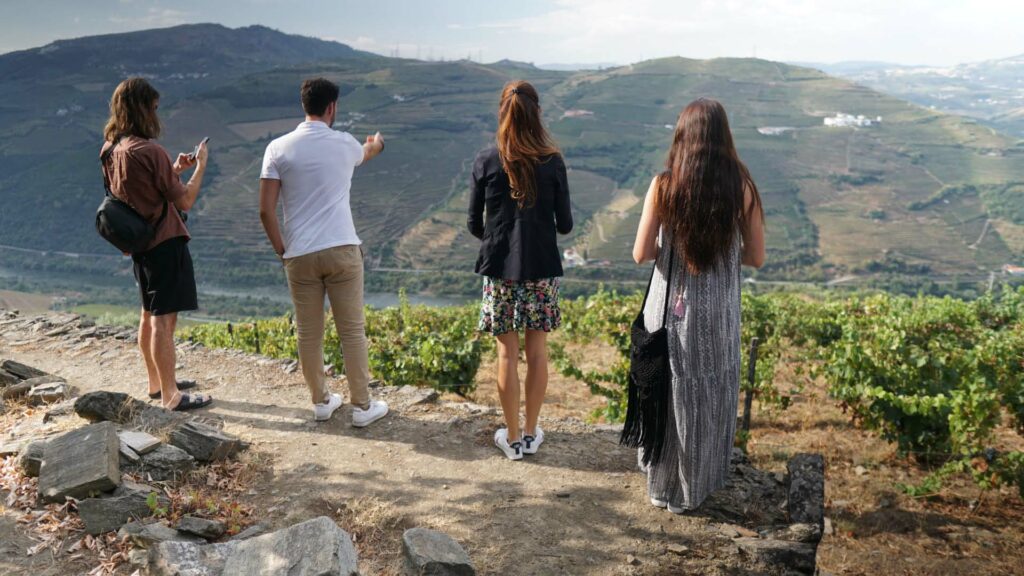
Though, that is not to diminish the quality of their Port wines—quite simply the opposite—it is to further highlight what else the producers of the Douro wine region are producing. These still, dry wines of the Douro wine region, encompassing unique winery blends of the indigenous grapes, are labeled as Douro DOC wines.
Port wine
Port wine production has become almost synonymous with the Douro Valley, so much so that the world’s oldest denomination of Port wine also has its origin here, the “Região Demarcada do Douro.” That being said, authentic Port wine can only be produced in Portugal, but what is it exactly? Port wine is a fortified, red wine from Portugal that is commonly consumed as a dessert wine—due mostly to the fact that it is sweet and best enjoyed in small, savory sips.
There are four notable styles of Port that include Ruby Port, Tawny Port, White Port, and Rosé Port. One of the most important defining characteristics of Port—beyond the fact that it has to be produced in Portugal—is that it has to be a blend of indigenous Portuguese grapes, including Touriga Franca, Touriga Nacional, Tinta Roriz (Tempranillo), Tinta Barroca, and Tinta Cão.
Port wine is made with the classic method, which includes using special fermenting tanks (known as lagars) made of granite to crush the grapes and amplify the richness of the color obtained in the process. Port wine does undergo a fermentation; however, the fermentation is stopped by adding brandy to it when they have obtained the ideal sugar levels.
Portuguese wineries I visited and appreciated:
CARM—Douro Superior
CARM winery, which stands for Casa Agricola Roboredo Madeira, is a strictly family-run operation and has been since the Roboredo Madeira family first began their business there in the 17th century. In 2004, however, CARM built a new winery in an effort to enhance the quality of the wines it produces and better capitalize on the distinctive terroir of the region.
Bordering the Douro International Natural Park, CARM winery is located in Almendra in the Douro Superior region and was strategically built here to provide protection for the vines from the sun and to act as a central location for the family vineyards. This was also in order to create a more central location that would make it more productive during the harvest of the grapes. Moreover, the Douro Superior soils—mostly known for being poor in quality and stony—coupled with the predominantly arid climate and low rainfall, have continued to shape and further enrich the superior quality and variety of the regional wines they produce.
The Douro Superior region, also known as the Alto Douro Vinhateiro, is one of the “oldest and most noble demarcated wine regions of the world.” This is important to note because it demonstrates the significance of this region according to its historical production of diverse grapes such as Codega do Larinho, Touriga Nacional, Tinta Roriz, and Rabo de Ovelha, to name a few.
When we arrived for our visit the harvest for the white varieties had just stared. I was impressed by the neat, clean style of their wines and by the good balance of acidity and ripeness in the whites and the rosé, which is not easy to achieve in the hot climate conditions of Douro Superior.
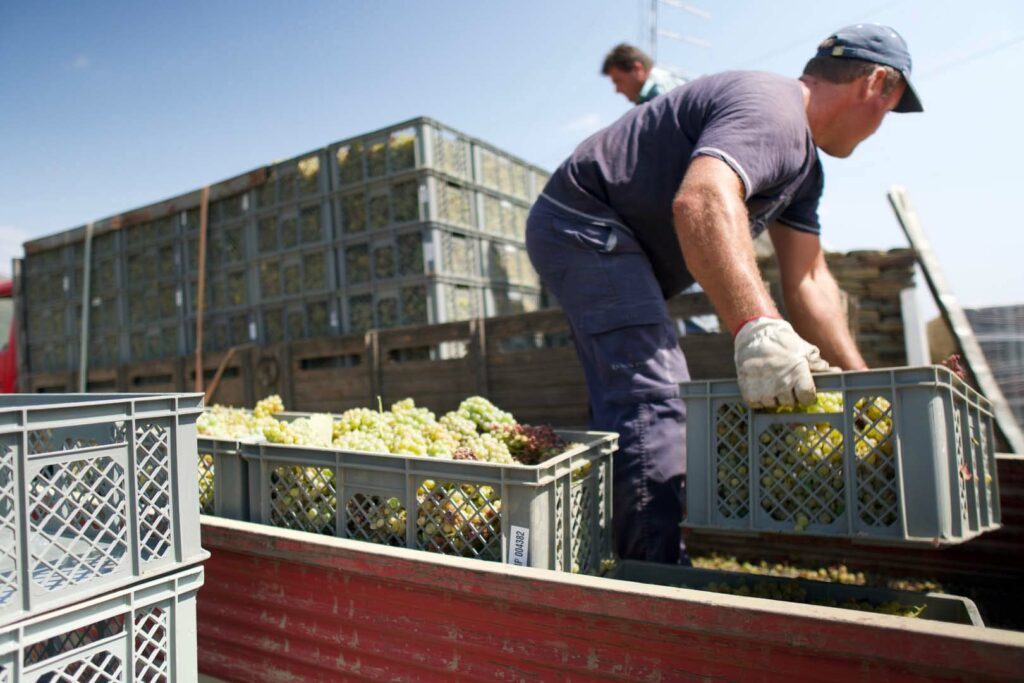
They also produce a Sulphate free wine from Touring National grapes: it was so intense at the nose with floral notes of violets and fresh strawberries and raspberries. It is produced in an oxygen free environment to better preserve the wine, without adding sulphites.
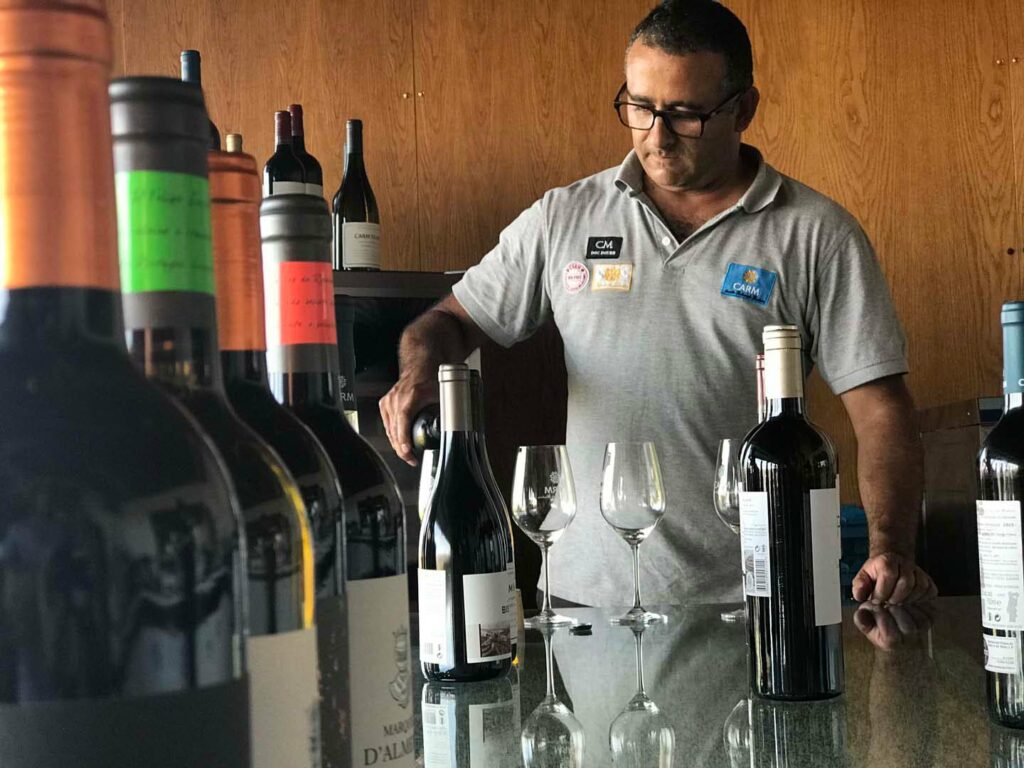
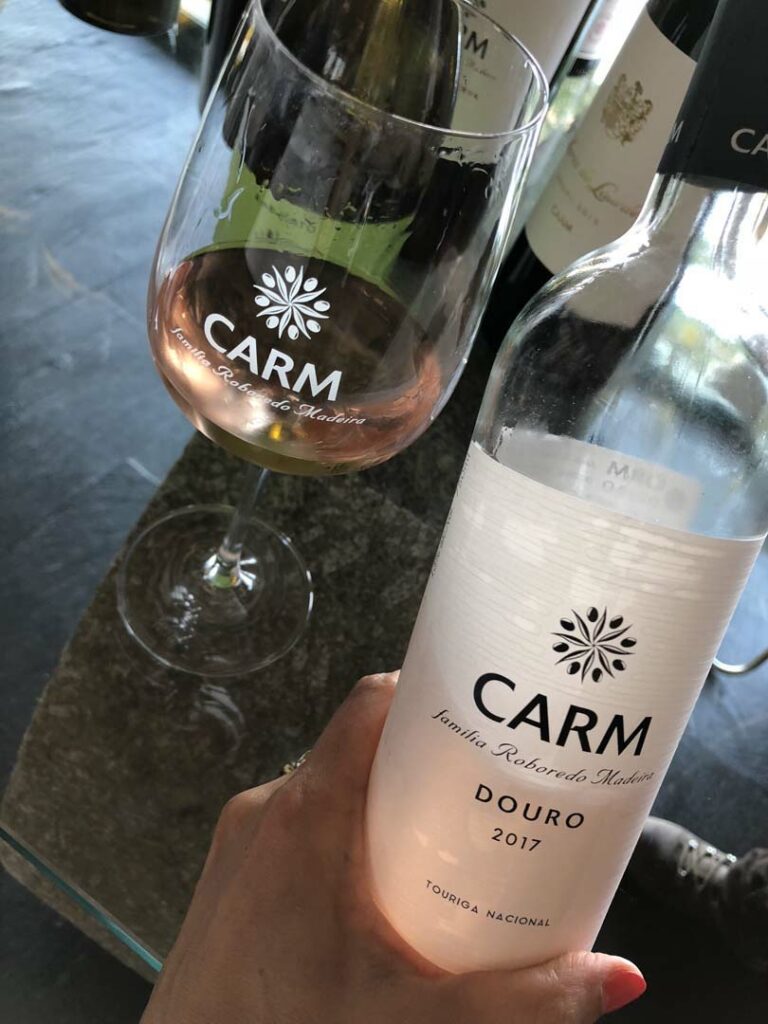
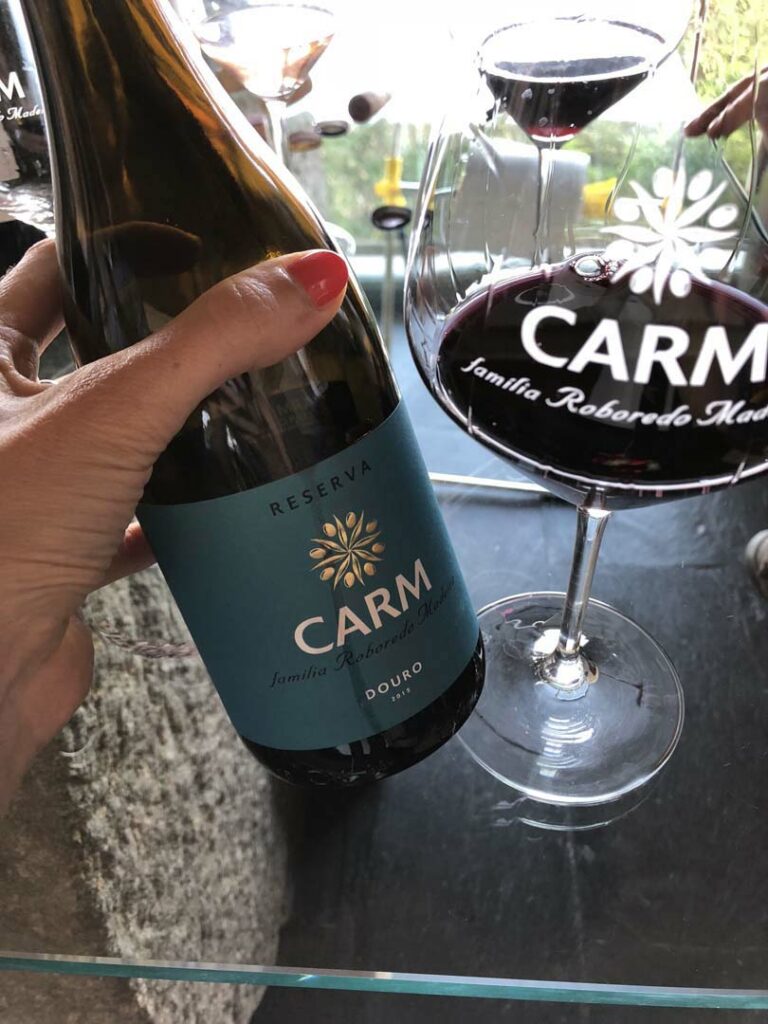
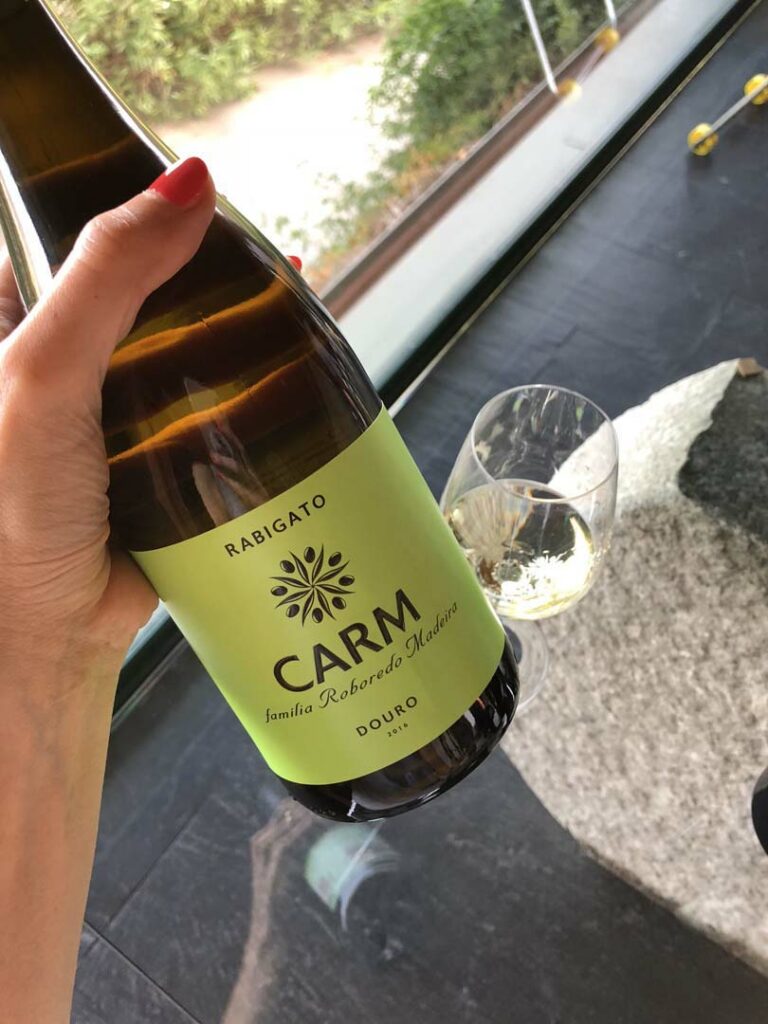
Conceito
Established in the ‘40s, Conceito began with the family agricultural company owned and operated by brothers José Costa Ferreira and Luís Costa Ferreira, which later became Conceito Wines and was known for producing only the grapes for Port wines. Ownership of the family vineyards was turned over to Carla Ferreira, who eventually passed it onto her daughter, Rita Marques. Rita has become the “face and soul” of Conceito, and she has been unequivocally responsible for ensuring their wines display their true essence of the Douro Valley.
Conceito is composed of four estate vineyards in the Teja Valley: Quinta da Veiga, Quinta do Chão-do-Pereiro, Quinta do Cabido, and a uniquely small vineyard at the top of the valley where there is granite, which they use solely for white wines.
Most importantly, Conceito states their wines “have soul because they are authentic, but also because they carry the consistency of a winemaking project which involves local communities.” This is exemplified through their attention to showcasing the diversity of the terroir of the Douro Valley and their desire to produce wines that allow their complexities to speak for themselves.
Currently, Conceito Wines have expanded their wine production to include more than simply Port wines with a range of reds, whites, grape varietals from other origins, and sparkling wines. They seek to illustrate the elegance and precision of their wines and winemaking efforts through their repertoire of diverse Douro wines.

Rita Marques is a talented winemaker, she likes to experiment in the vineyard with density and different varieties. Among the wines I tasted (see pictures below) I was impressed by a Grüner Veltliner sparkling wine, champenoise method. I know, it is not an indigenous variety, but it was damn good! The production is very limited, I will probably never drink it again, but I really appreciated the experimental approach of Rita.
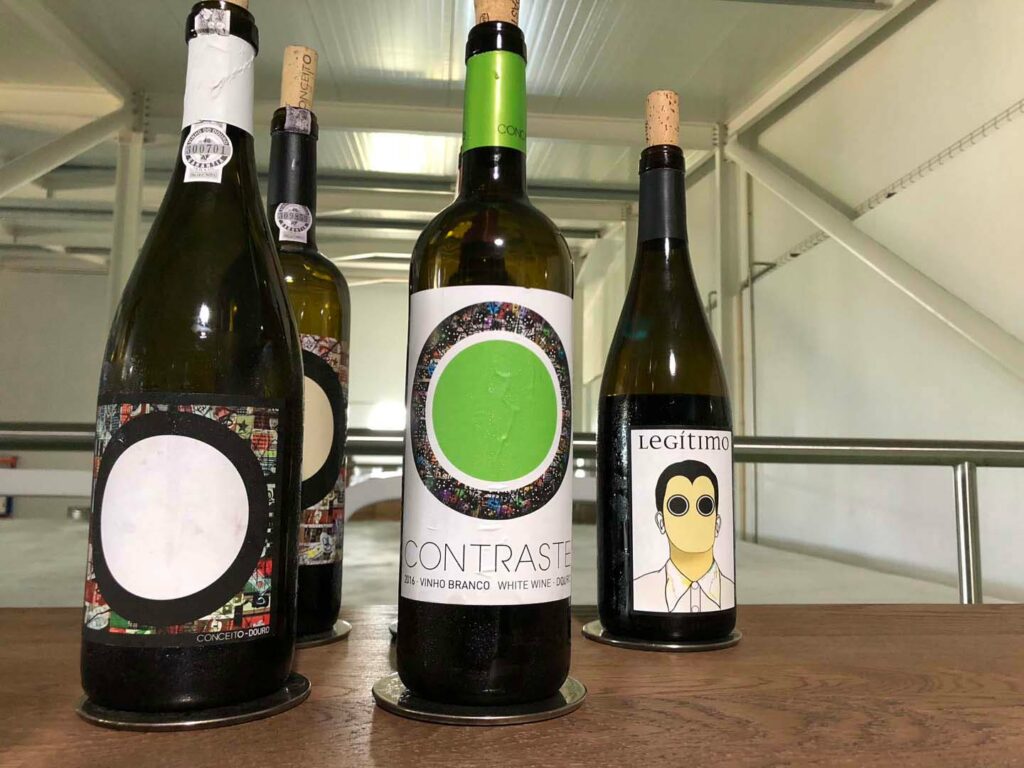
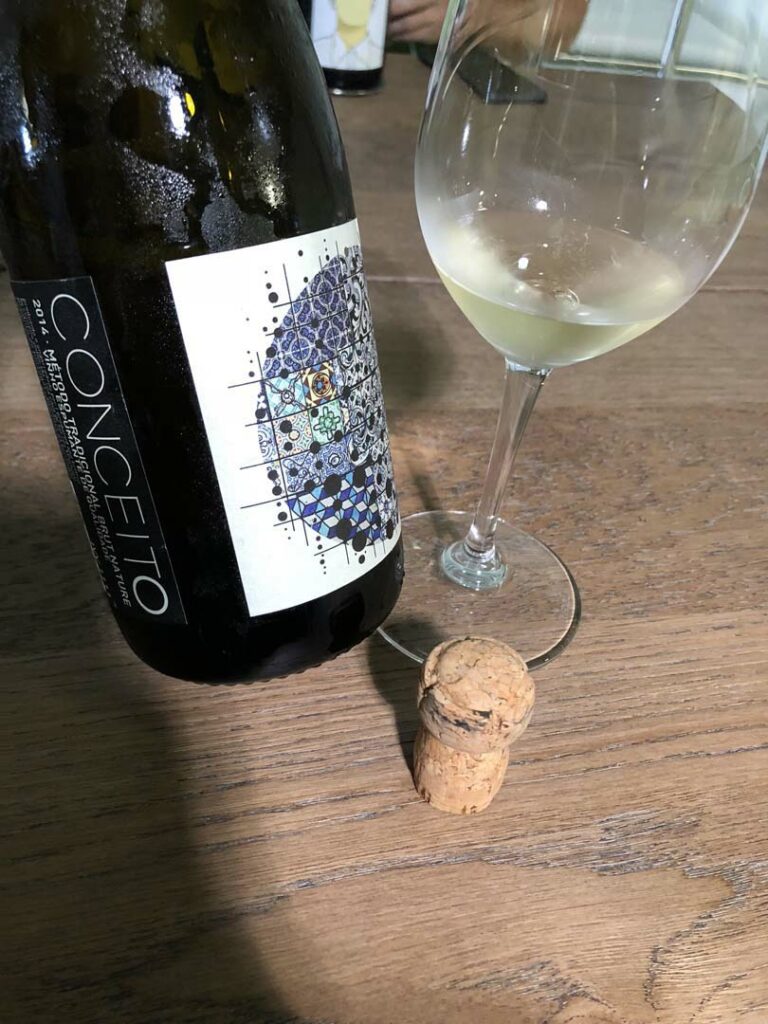
Covela
Quinta de Covela, located in the warmest part of the Vinho Verde region, was founded in the 16th century and began as a traditional farm—before Manoel de Oliveira bought the land and transformed much of the landscapes in the ‘50s. Manoel de Oliveira, one of the most significant European film directors of the 20th century, began to make necessary improvements to the surrounding land and irrigation. Then, when entrepreneur Nuno Araújo purchased the Covela estate and launched the Covela brand, he began to plant the first vines in order to shift the focus to a quality wine production.
Today, Tony Smith and Marcelo Lima own and operate the property, and they have shifted the production of their grapes to be more in favor of whites, most especially favoring the Portuguese varieties over international ones. Eventually, Lima and Smith’s desire is to maintain the estate at 80% white and have Avesso be the main grape they produced. Also, Covela’s intention is to perfect their white Vinho Verde and let consumers see how their wines differ from mass-produced versions of Vinho Verde.
It was the first time for me to taste an Avesso wine: I fell in love immediatley. It is zesty, briny, it has a delicate tropical note and some ethereal hints. Great wine!
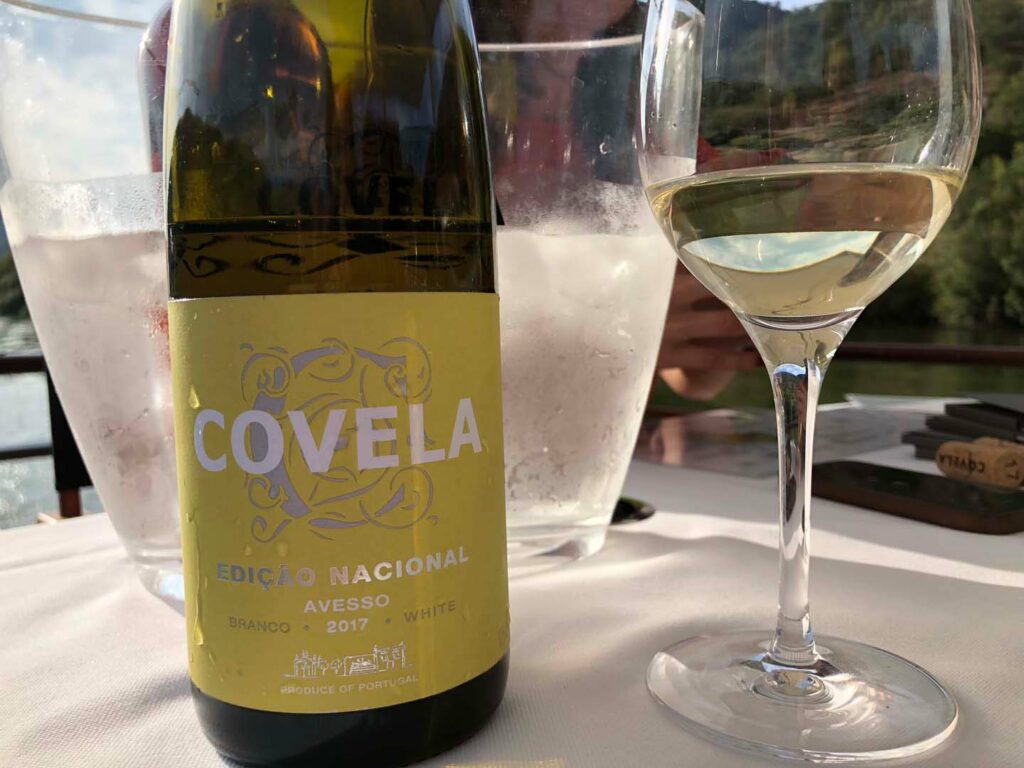
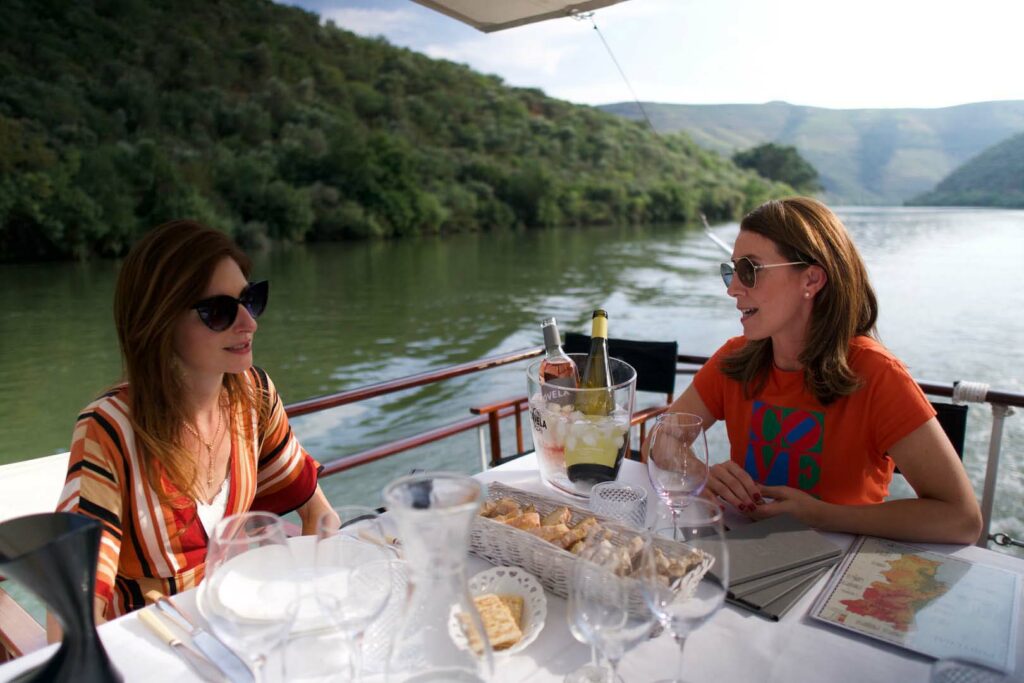
Their south-facing vineyards are planted in a mineral-rich soil close to the Douro River at a low altitude, and they produce mostly white and rosé wines through their organic farming methods. Covela produces wines in a classical style, with a few of their wines composed of 100% the same grape, including their Edição Nacional made of 100% Avesso grapes.
Lima and Smith’s partnership has since produced a group of three estates, including Quinta de Covela, Quinta da Boavista, and Quinta das Tecedeiras. They have transformed each of these areas in such a way that preserves the local Portuguese wine flavor profiles and produces high-quality, dynamic wines.
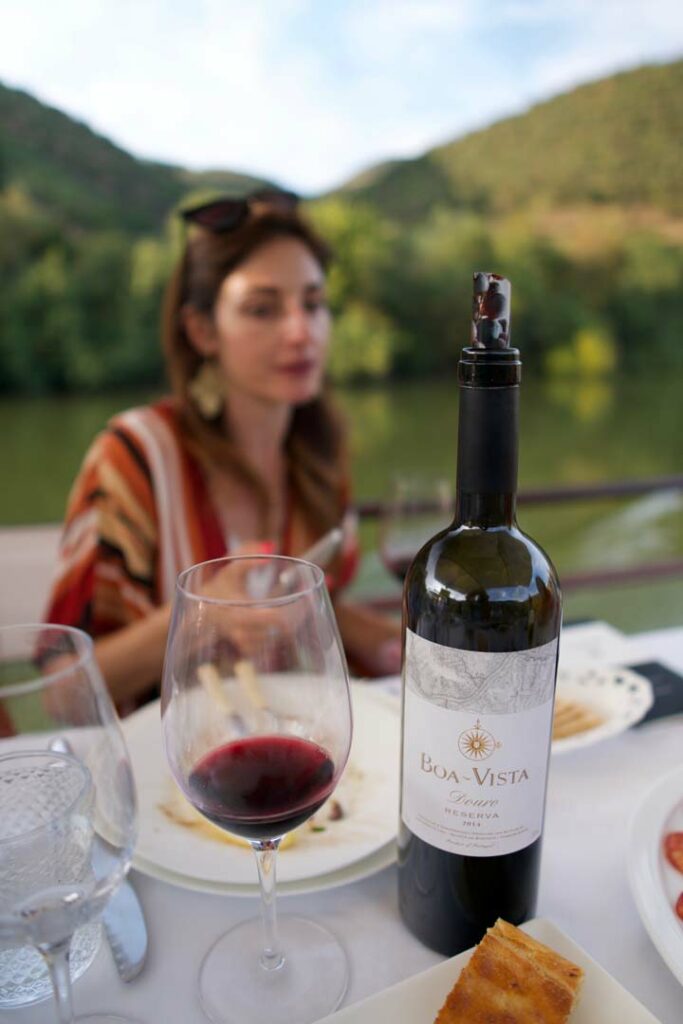
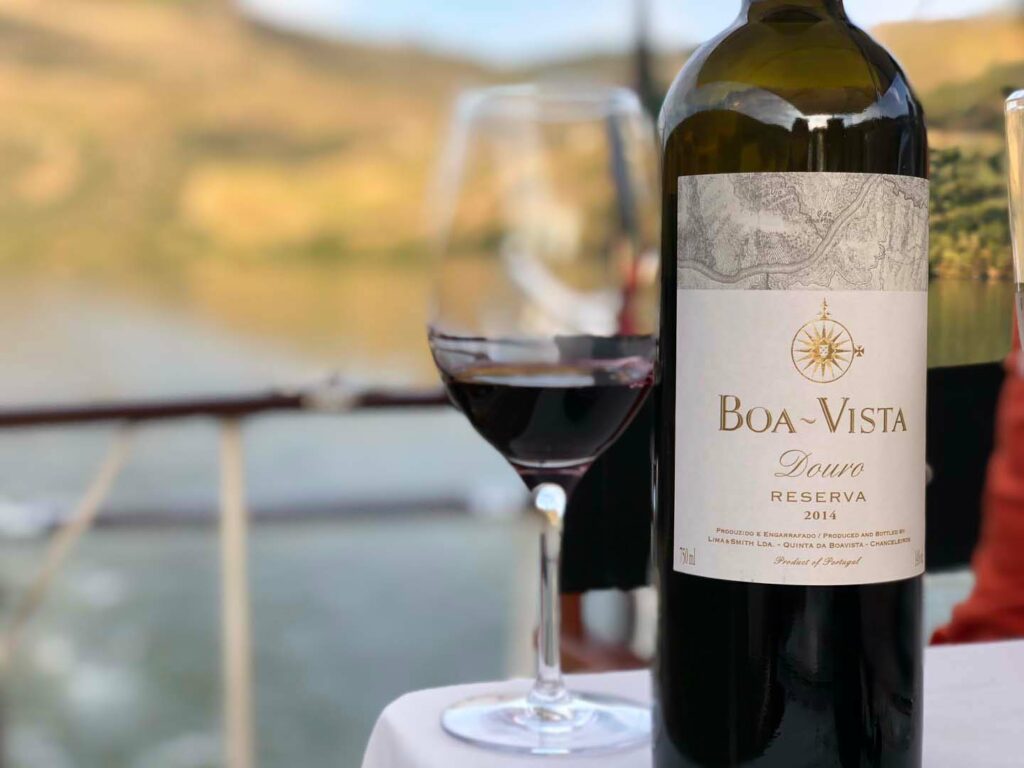
The best wine I tasted from the other estates was Boa Vista Reserva, the flagship and iconic wine of the Quinta da Boavista. Jean-Claude Berrouet, previously winemaking consultant to Moueix (Pétrus et al) for 44 years, has been hired to craft this wine which is a masterpiece: creamy, luscious, a true meditation wine with a mineral twist.
Wine & Soul
In 2001, husband and wife Jorge Serôdio Borges and Sandra Tavares da Silva, saw the culmination of their hard work and passion for wine come to fruition through their founding of their winery, Wine & Soul, in Pinhão Valley in the Cima Corgo subzone.
They envisioned vineyards and wines that would embody the traditional feel of the old Douro vineyards and effectively encompass the picturesque landscapes and diversity of the Douro region.
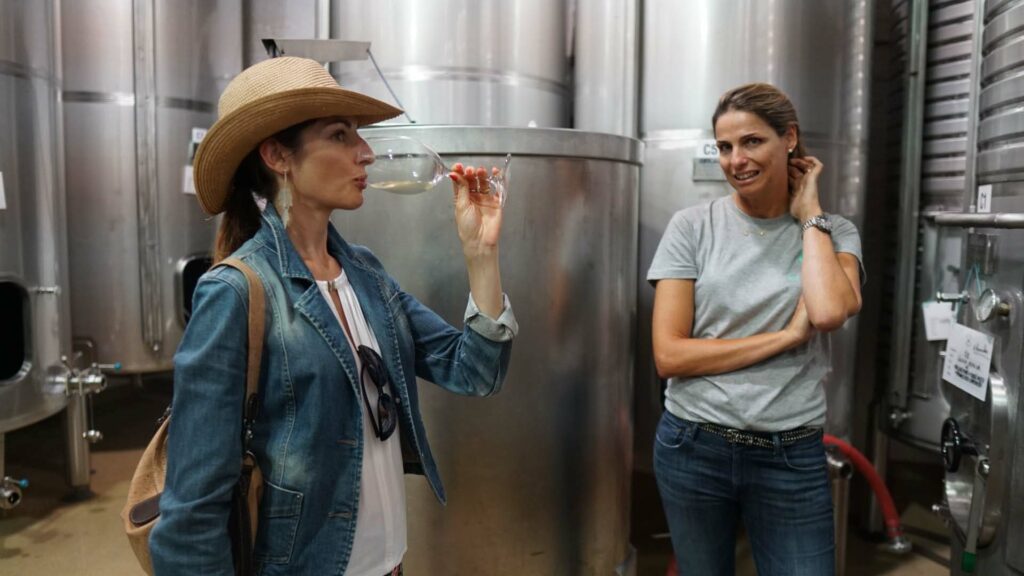
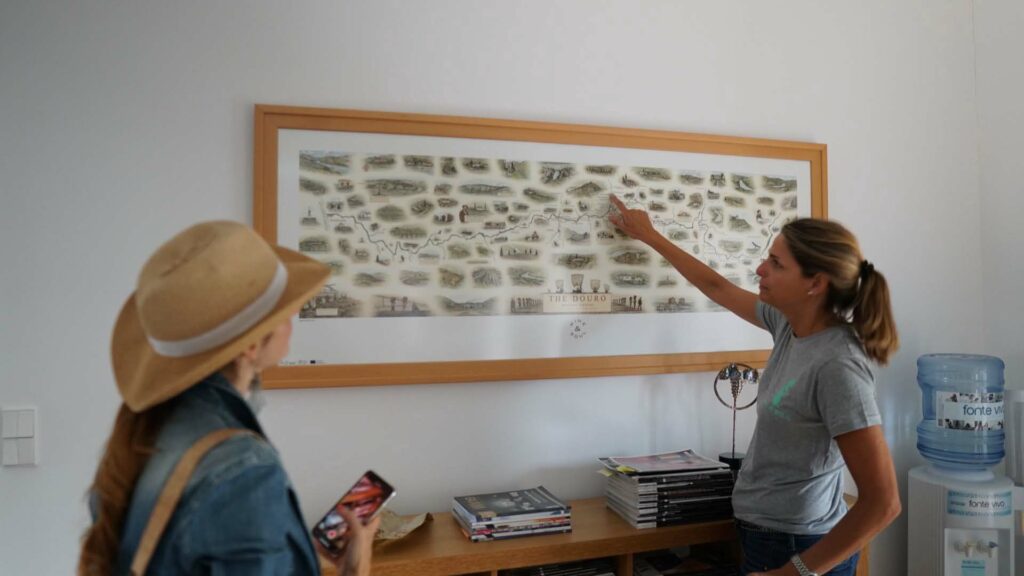
Visiting Wine and Soul was a great learning experience: it is a small, family run estate. Sandra and her husband are true winemakers: they know how to handle the grapes at perfection, the know how to get the best out of every harvest without compromising the primary aromas and the soul of the grape variety. I love their approach, which is reflected in their stunning wines.
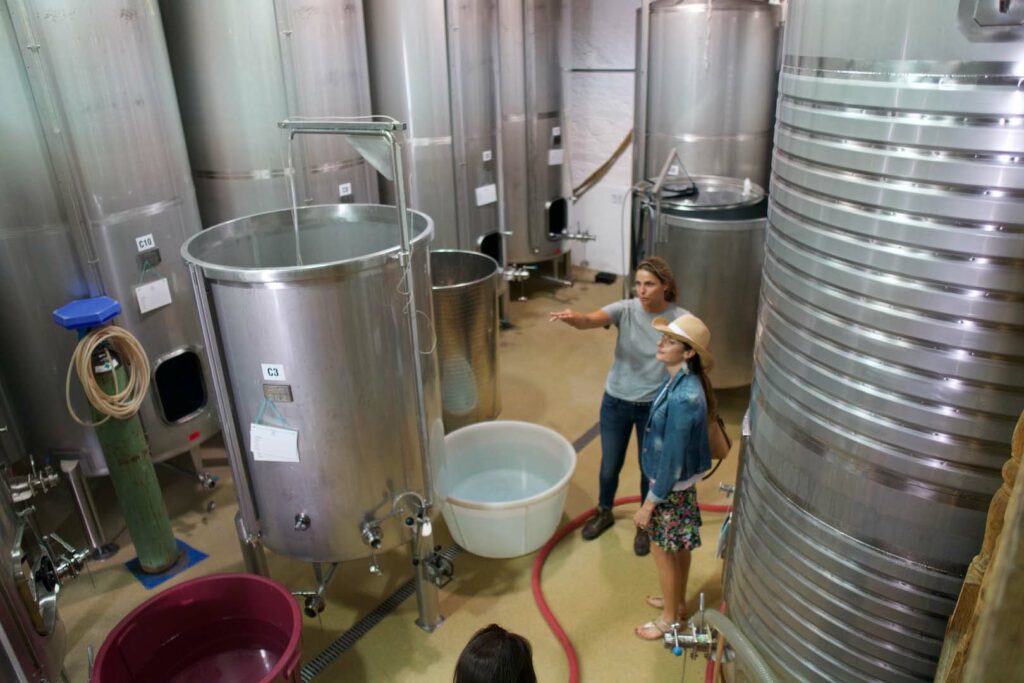
Their first wine, Pintas, is a full-bodied red wine that they believe “just shows the best version of the Douro, that voluptuous fruit of the Douro, the raciness, the enthusiasm, and the perfect balance of the long and lasting finish.” The other wines that comprise their portfolio include their red Pintas Character wine, their white Guru wine, their Vintage Port Pintas wine, and their 5G Port wine, which is a Tawny Port wine distinct from any other winery—known for being a blend of several other Port wines that are mostly over a hundred years old.
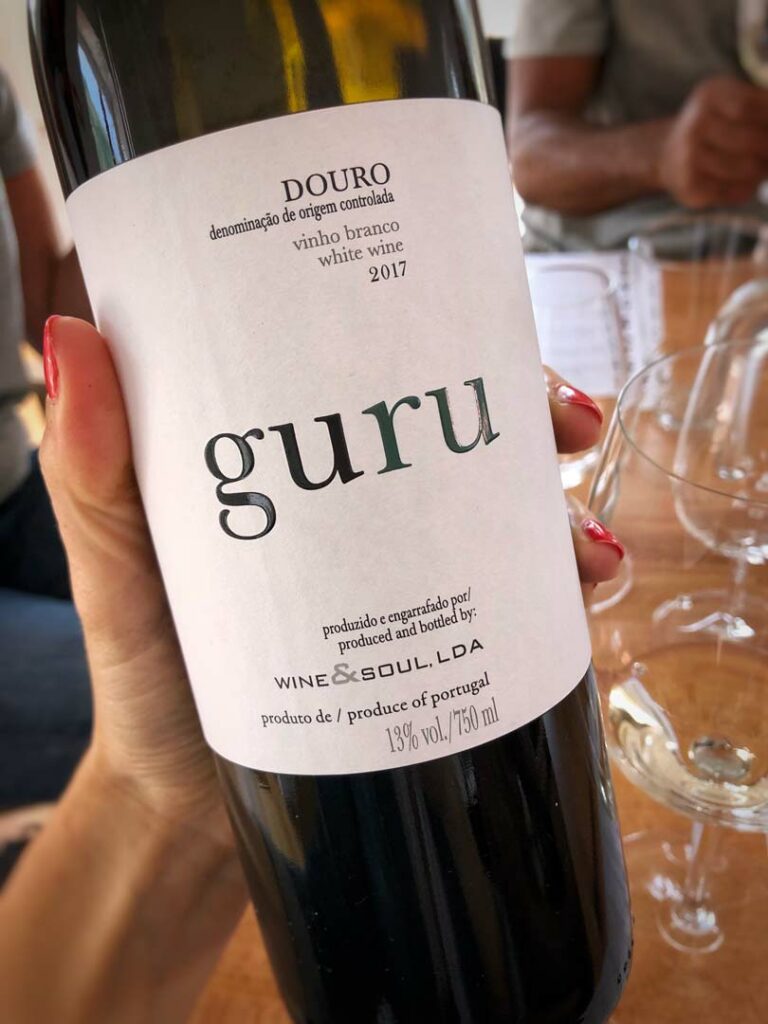
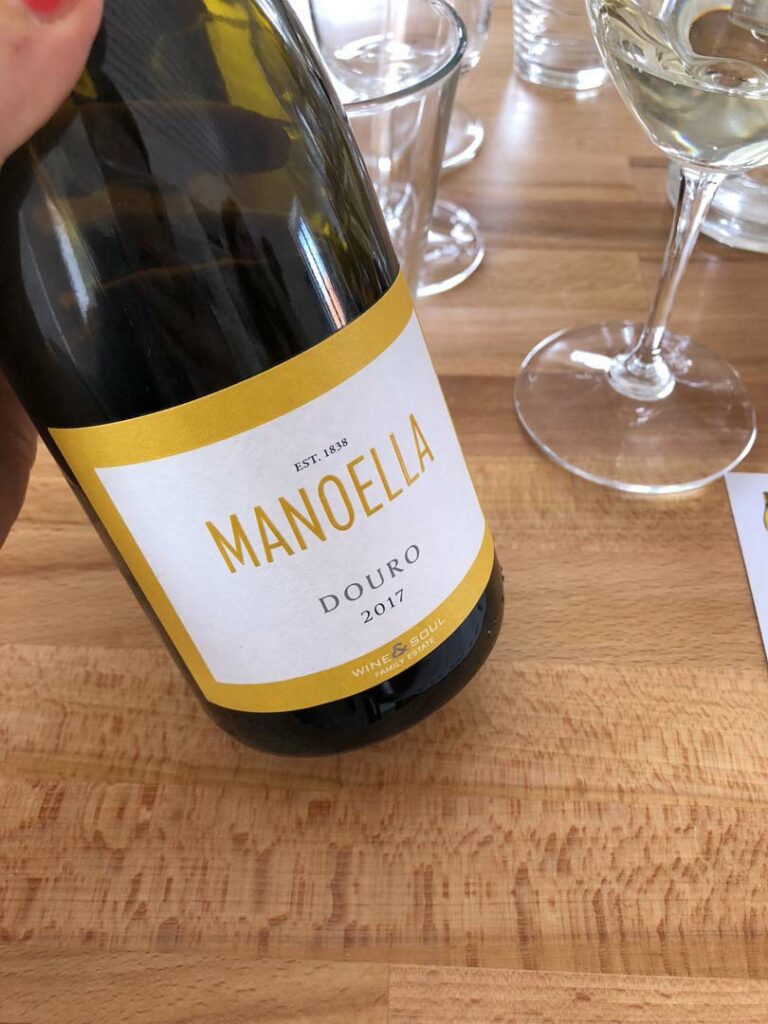
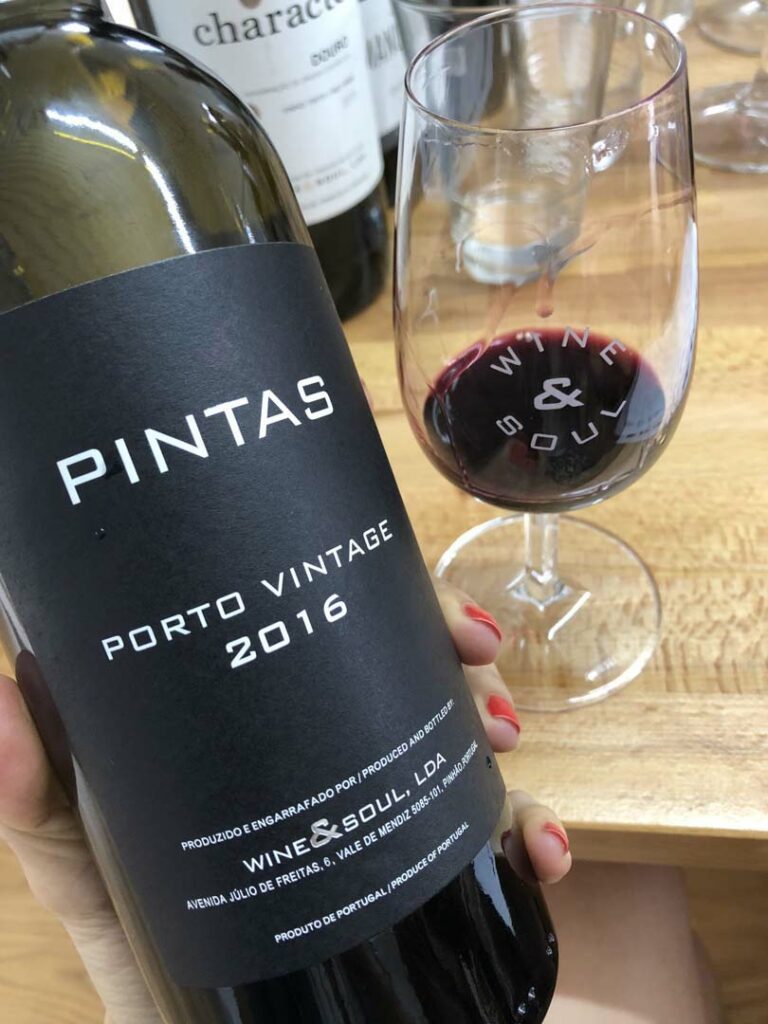
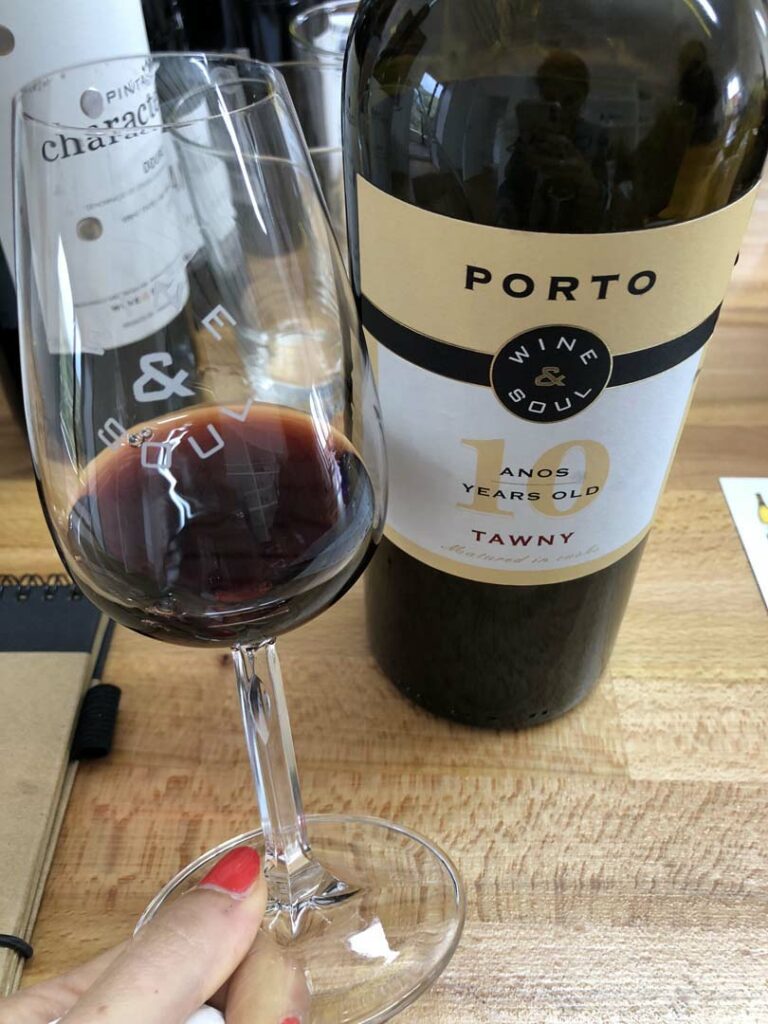
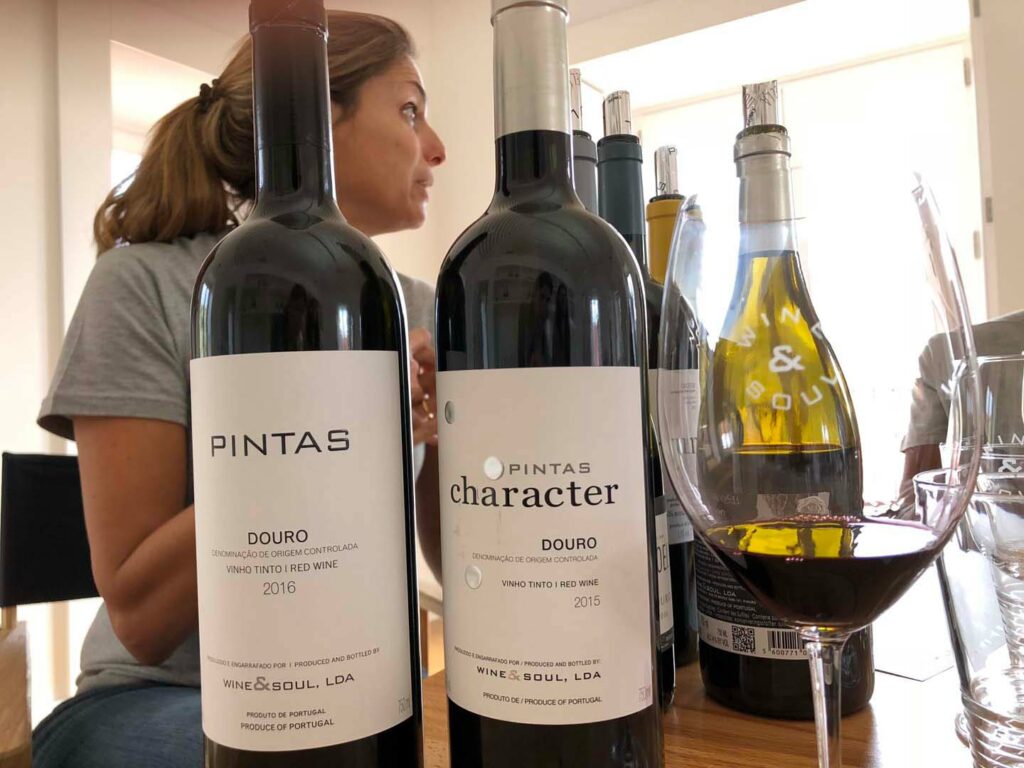
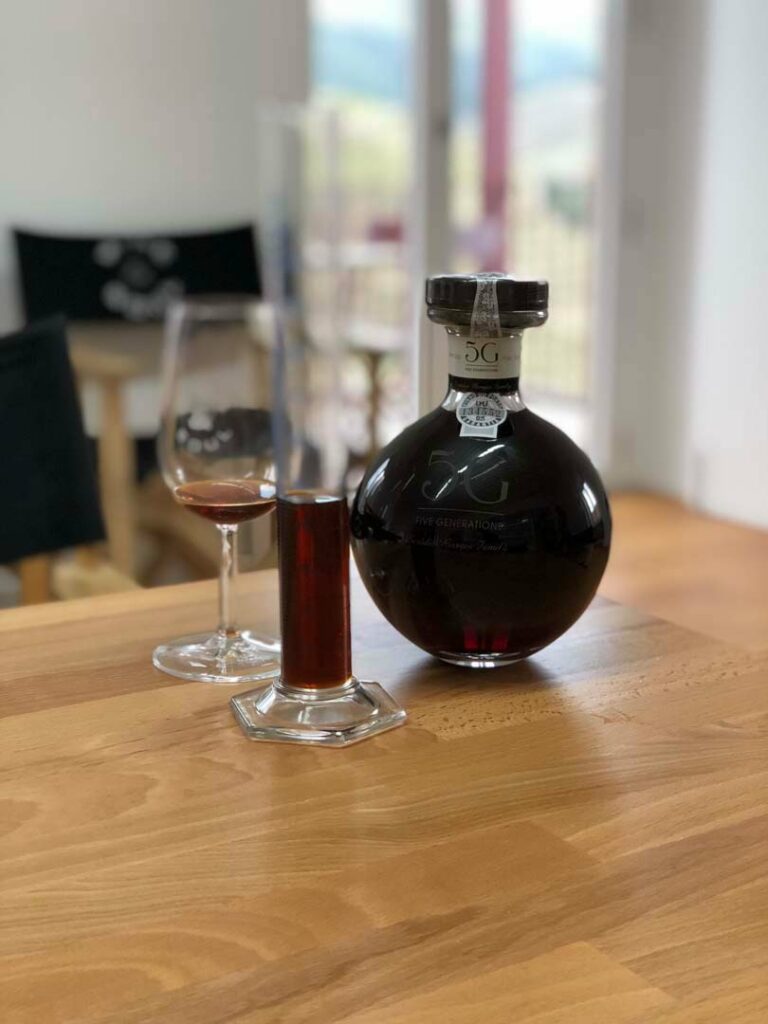
In 2009, they inherited the vineyards of Quinta da Manoella and have since transformed these vineyards that range in age from 30 to 100 years old. Their Quinta da Manoella Vinhas Velhas wine has become one of the most distinguished, recognized wines in all of the Douro Valley. Overall, Wine & Soul winery prioritizes their traditional, natural methods of farming, which allows the unique terroir and indigenous grapes to manifest themselves beautifully and genuinely in the wines.
MY YOUTUBE VLOGS
TRAVEL AGENCY
UNCOVR https://www.uncovrtravel.com
ACCOMODATIONS:
QUINTA DO VALLADO WINE HOTEL http://www.quintadovallado.com
CASAS DO CORO RESORT http://www.casasdocoro.com.pt/casas-do-coro
WINERIES
QUINTA DO VALLADO http://www.quintadovallado.com
RAMOS PINTO http://www.ramospinto.pt/default.aspx
COVELA http://www.covela.pt
BOA VISTA http://www.quintadaboavista.pt/en/client/skins/geral.php?id=102
CARM http://www.carm.pt/english/carm/adegas.htm
CONCEITO http://www.conceito.com.pt/love
WINE AND SOUL http://www.wineandsoul.com/en/


